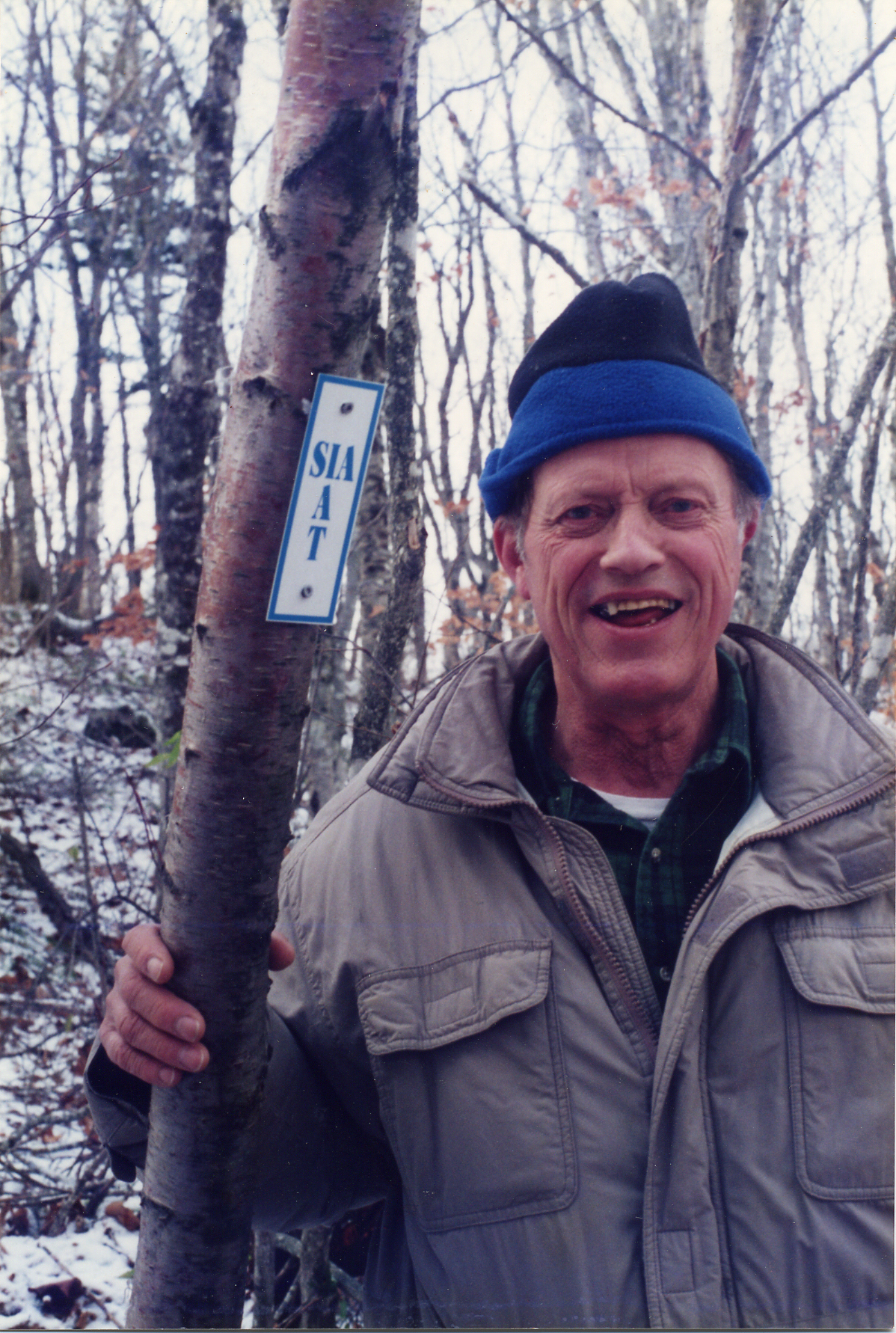by George Neavoll
The photo on the IAT’s handsome new website of Herb Hartman, Maine’s former state parks director, nailing an International Appalachian Trail marker to a tree stirs vivid memories. I helped clear the first mile of what today is the Richard B. Anderson Trail along the forested spine of Mars Hill Mountain in far eastern Aroostook County in 1995. I took a photo that ran shortly after with my Maine Sunday Telegram column of Dick nailing a similar marker to a yellow birch there.
Don Hudson, who later would succeed Dick as IAT president, remarked that come Spring, this portion of the trail would be a leafy green bower. I actually had done little of the trail-clearing, but this still made me feel pretty good!
Few knew, then, that the trail was to be, in time, a 12,000-mile footpath through 11 countries and jurisdictions, extending in a horseshoe from Maine and Atlantic Canada all the way to Norway’s Svalbard archipelago and south to Morocco.
The “Appalachian terranes,” the ancient landforms these places embraced, would be the basis for the future International Appalachian Trail. They once had formed the Appalachian-Caledonian mountains of the “supercontinent” Pangea before “plate tectonics” under the Atlantic Ocean separated them into their North American and European/North African components.
The story of “our common geoheritage” is reflected in the new “Pioneer Geologists” link on the IAT’s website.
“NOW, A TRAIL for two countries,” we had headlined a piece about the new IAT in 1994, which was envisaged then as a trail linking the highest points in Maine, New Brunswick and Quebec. I experienced my first iconic Maine sporting camp when I sat in on an early meeting of the IAT board at Robinson Twin Pine Camp on Millinocket Lake in 1995, gathering material for future columns and editorials.
I later was on Mont Jacques-Cartier in the Chic-Chocs of Quebec, still gathering material but also looking for the Woodland Caribou making their last stand south of the St. Lawrence River. (I didn’t see them.)
Later still, in 1997, I was elsewhere on the Gaspe Peninsula watching the most amazing display of the Aurora Borealis over the Gulf of St. Lawrence anyone in our IAT group could remember.
The notion of a two-nation trail soon changed, with the involvement of Walter Anderson, former state geologist, and others who had done pioneering work of their own on the theory of plate tectonics. The trail’s potential exploded when they applied the theory to the Appalachian-Caledonian geology that created the footprints of the prehistoric mountain chain.
It wasn’t long before an IAT delegation was aboard an icebreaker crashing through the sea ice from Sydney, Nova Scotia, to Port-au-Basques, Newfoundland, on a trip to help establish a chapter there in 2003. (When one of the meetings dragged, Will Richard, noted northland photographer and author, suggested he and I take a drive into the Blow-Me-Down Mountains west of Corner Brook. It was there we encountered first one, then more Boreal Chickadees, a “Life Bird” for this longtime birder. I was psyched.)
I RETURNED after my retirement to my native Oregon, shortly after the trail’s grand expansion into Western Europe and Northern Africa was starting. Now I look out my apartment window in Portland’s Goose Hollow at the sleeping Cascade volcanoes of Mount Adams, Mount St. Helens and, away to the north, Mount Rainier. (Fabled Mount Hood is out of view around the corner of my building.) These are “the shining mountains,” as David Simons called them, a continent away from the mountains, rivers and valleys of the IAT.
Still, I think of those magic times as a witness to conservation history when a simple walking trail headed north from Maine and became a major, ongoing effort to bind men and women with their mountains and their Atlantic Rim heritage.
“The Atlantic Ocean may have been dividing us for eons, but the International Appalachian Trail is well on its way to bringing us back together”, concludes an article on the IAT in the current issue of Earth Heritage magazine.
In a world divided by hatred and strife, it needs the healing presence of an IAT more than ever.


